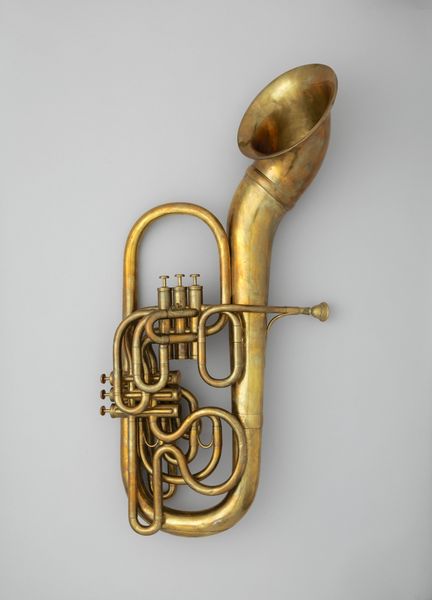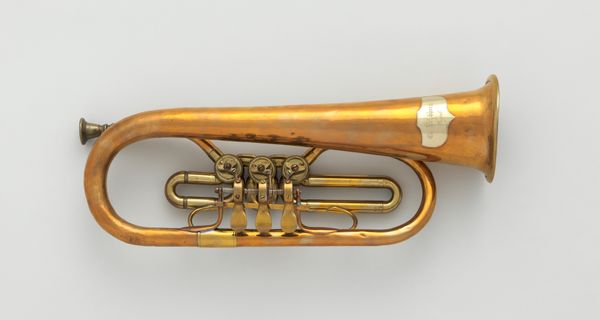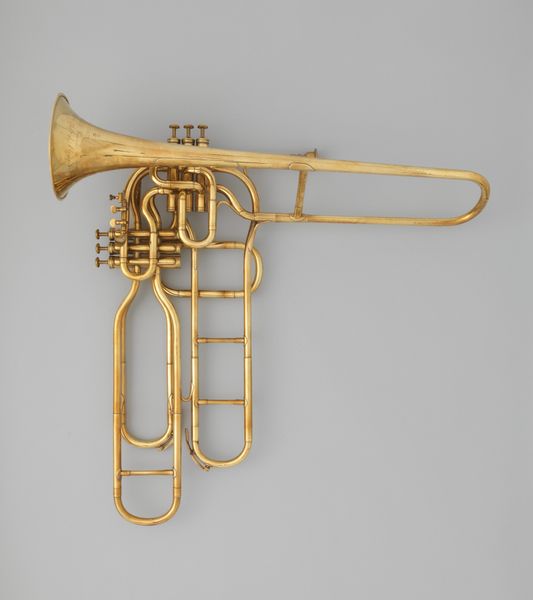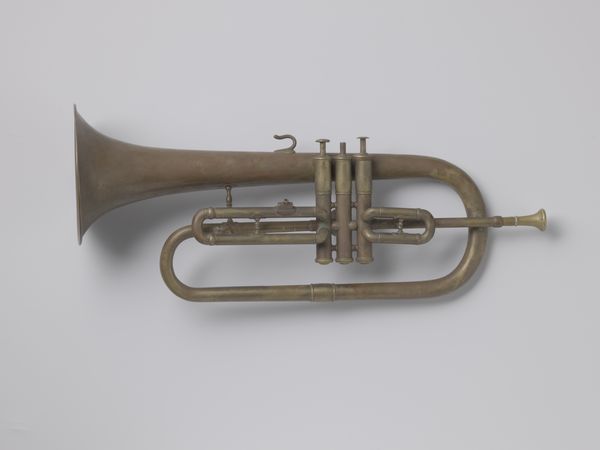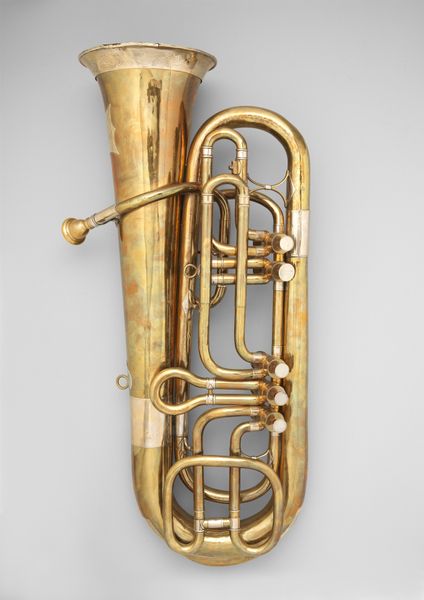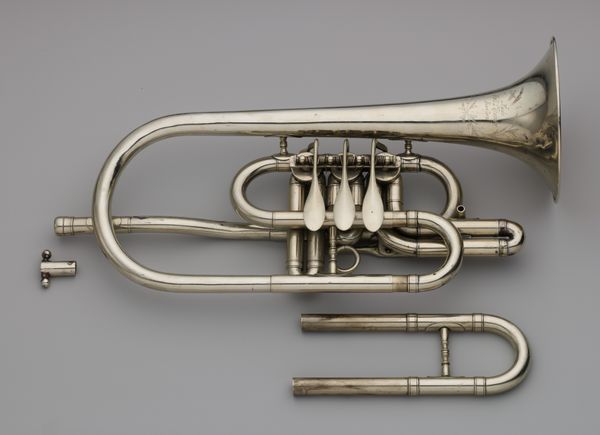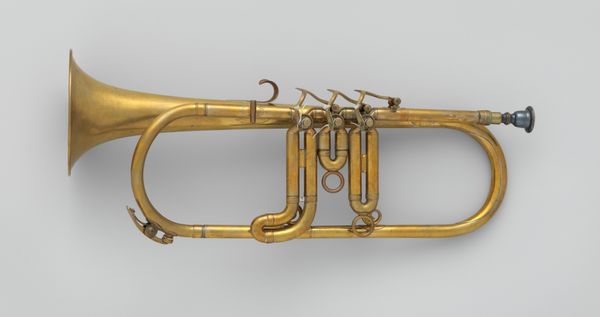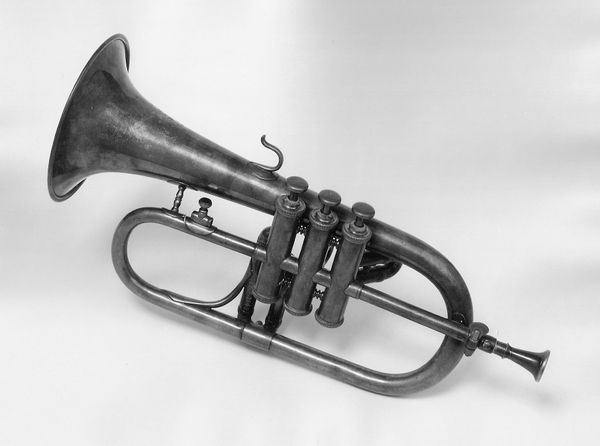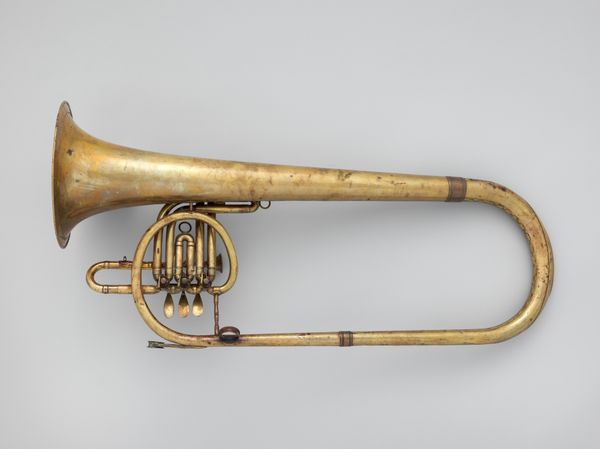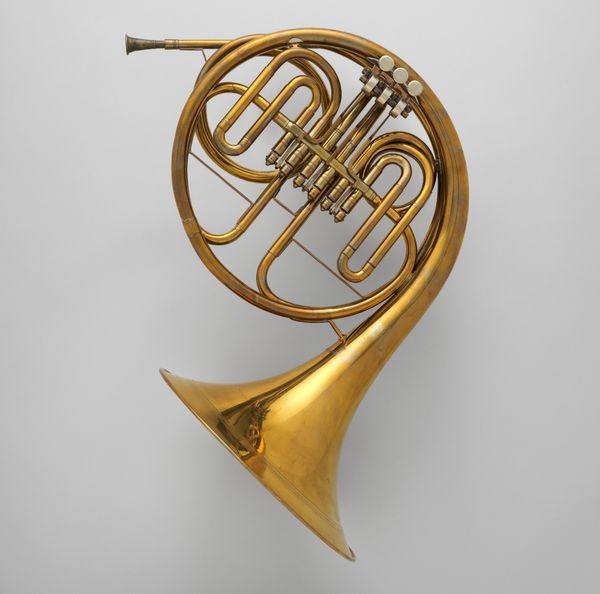
metal
#
metal
#
romanticism
#
musical-instrument
Dimensions: Width: 15 9/16 in. (39.6 cm) Diameter (Of bell): 7 5/16 in. (18.5 cm)
Copyright: Public Domain
Editor: We’re looking at an Alto or Tenor Cornopean, made sometime between 1837 and 1850. It's a metal instrument, and the curves are making me think about how the sound travels through it. What strikes you when you see this piece? Curator: The cornopean offers a fascinating study in form and function. Note the intricate tubing—observe how the artist has manipulated the metal to create a series of curves and parallel lines. It is in these arrangements that the very nature of the instrument resides, isn’t it? Editor: Absolutely. It's also interesting how the tarnishing of the metal adds another layer to its character. It creates a sense of depth that highlights its age and journey. Do you think that affects how we perceive it? Curator: Certainly. Consider how the varying tones and textures created by the tarnish—an effect of time itself—influence the viewer's experience. In this case, does the oxidation enhance or detract from its intended appearance? I argue the subtle chromatic gradations underscore the complex structure, enhancing it by demonstrating material transformation. Editor: That's an interesting point. It also gives this quite uniform-looking object some individuality, too. This instrument invites the question, how does an artist reconcile form and deterioration? Curator: An important consideration, yes. In the interplay of pristine design and subsequent material change, can we determine where utility ends and artistry begins? Does the metal's decay suggest more than age alone? Editor: I’ve learned that looking closely is about appreciating structure. Thanks! Curator: Indeed. Analyzing intrinsic design is key, leading us closer to understanding visual language.
Comments
No comments
Be the first to comment and join the conversation on the ultimate creative platform.
